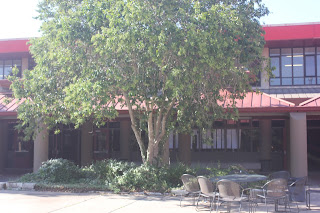Part 1
1. What is your reaction to his work?
I think it's a little weird at first because it looks photoshopped which I don't consider 100% photography because you are using more than just your camera a skills, but you are getting help from other sources. So it also appears fake, which I don't like.
2. How do you think he made these photos?
I think that he just moved his camera while taking the photo, but I also think he changed the settings of the camera to be able to split up the architecture. Because the middle in the most most clear image he may have been focused on the middle at first and then moved the camera side to side.
3. Think about some buildings you have seen, which ones would be good to take a photo like this? Tell me about those buildings, where are they, could you get easy access to them?
A building that would be good to take a photo like this would be a skyscraper, high church bell or tower. There is a tower with a church bell at Zilker Park near town lake which I think would be perfect for this type of photo. It is tall (which is a key element) and has a complex top part (the church bell and a clock) which is going to make the photo more appealing. It is very easy to get access because they structure is in near downtown Austin and outside.
Part 3
The three most important pictures to remember when you are out shooting are "The Runaway" , "Cafe at Night" and "Dance at Le Moulin de la Galette"
My favorite painting was Nighthawks by Edward Hopper
This photograph reusables the painting
This photograph follows the rules of the painting because it is very quiet. First of all the subject and his car seem as though they are in the middle of nowhere, immediately giving the impression of peace and quiet. And then the subject point is one subject (also having a simple background) following the rule of simplicity, which plays well with the "quiet" theme.
"Nighthawks" influenced me the most because I personally find night photography very beautiful and appealing because night gives you the feeling as though you are the only person on this planet right now, which is insanely powerful. I also like how the subjects are a bit spread out, but not too far apart. This affected me the most because it gave me an idea of types of photos I'm going to try and capture.



























